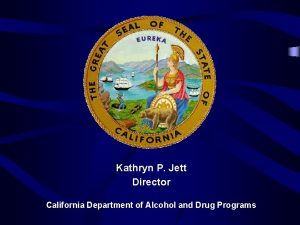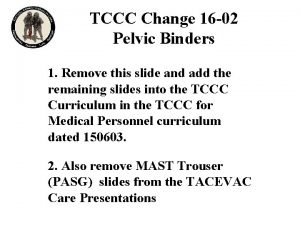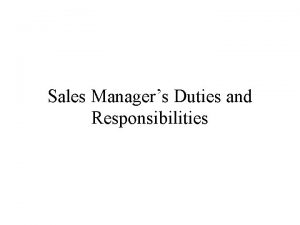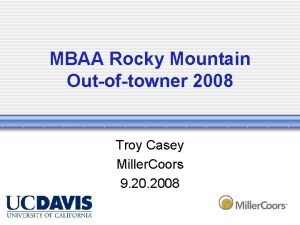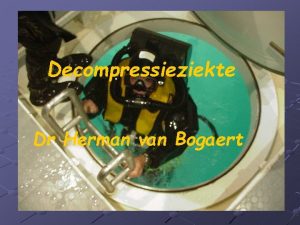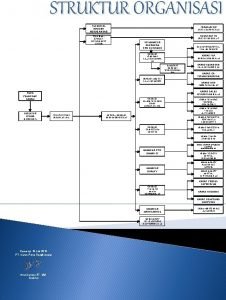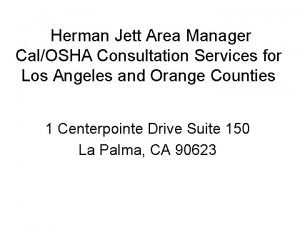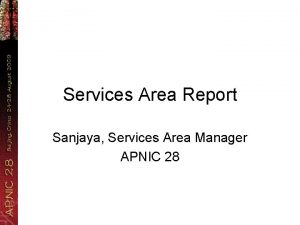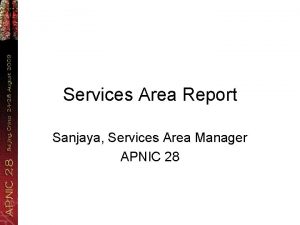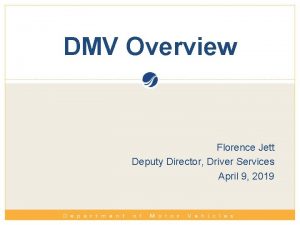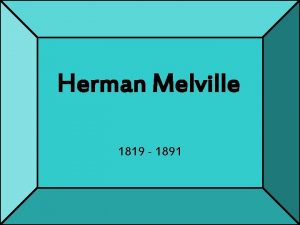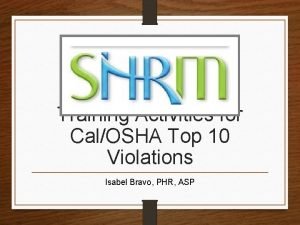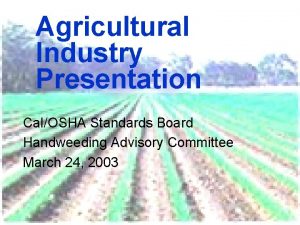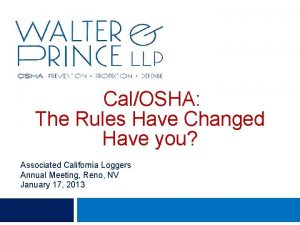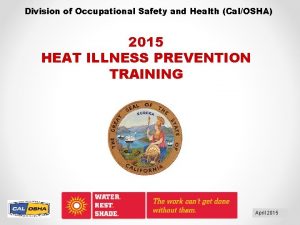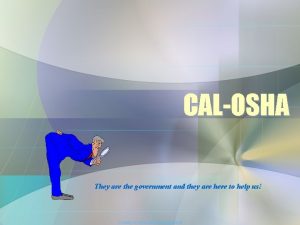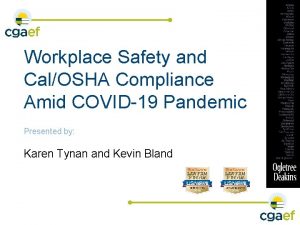Herman Jett Area Manager CalOSHA Consultation Services for





















- Slides: 21

Herman Jett Area Manager Cal/OSHA Consultation Services for Los Angeles and Orange Counties 1 Centerpointe Drive Suite 150 La Palma, CA 90623

Globally Harmonized System (GHS) A Worldwide System for Hazard Communication

What is the GHS? • The Globally Harmonized System (GHS) is an international approach to hazard communication, providing agreed criteria for classification of chemical hazards, and a standardized approach to label elements and safety data sheets

Why? (cont. ) • Countries with systems have different requirements for hazard definitions as well as information to be included on a label or material safety data sheet. • For example, a product may be considered flammable or toxic in one country, but not in another to which it is being shipped.

Why does the US need it? • US Regulatory agencies regulations are not domestically harmonized—each Agency has pursued independent regulations that differ from each other • Domestic producers have to classify and label multiple times for the same product AFFECTED AGENCIES • • Environmental Protection Agency (EPA)-Pesticides Program Department of Transportation-Hazardous Materials Reg. Consumer Product Safety Commission (CPSC) Occupational Safety and Health Administration (OSHA)

Principles Of Harmonization § Protections will not be reduced; comprehensibility will be key. § All types of chemicals will be covered; will be based on intrinsic properties (hazards) of chemicals. § All regulatory systems will have to be changed.

GHS Why Now? • Non-uniform communication • Varying degrees of safety implementation • High cost of compliance for international companies • No classification of chemical hazards • Need for greater consistency

International Mandate • An international mandate to harmonize was proposed at the United Nations Conference on the Environment and Development (UNCED) in 1992 in Brazil: – A globally-harmonized hazard classification and compatible labeling system, including material safety data sheets and easily understandable symbols, should be available, if feasible, by the year 2000. – Adopted by the UN 2002.

What is Changing? Uniformity-Oriented Approach • Classification of Hazardous Materials • Required Chemical Information • Use of signal words, pictograms, and hazard warning Terminology • “Hazard Determination” is now “Hazard Classification” • “Evaluate” is now “Classify” • “MSDS” is now “SDS”

The GHS Elements Classification Criteria – Health and Environmental Hazards – Physical Hazards – Mixtures Hazard Communication – Labels – Safety Data Sheets

Classification Criteria. Health/Environmental Hazards Acute Toxicity Skin Corrosion/Irritation Serious Eye Damage/Eye Irritation Respiratory or Skin Sensitization Germ Cell Mutagenicity Carcinogenicity Reproductive Toxicity Target Organ Systemic Toxicity/Single and Repeated Dose Hazardous to the Aquatic Environment

Classification Criteria. Physical Hazards Explosives Flammability – gases, aerosols, liquids, solids Oxidizers – liquid, solid, gases Self-Reactive Pyrophoric – liquids, solids Organic Peroxides Corrosive to Metals Gases Under Pressure Water-Activated Flammable Gases

Hazard Statements § A single harmonized hazard statement for each level of hazard within each hazard class § Example: Flammable liquids • • Category 1: Extremely flammable liquid and vapour Category 2: Highly flammable liquid and vapour Category 3: Flammable liquid and vapour Category 4: Combustible liquid

Key Label Elements Product identifier Supplier identifier Chemical identity Hazard pictograms* Signal words* Hazard statements* Precautionary information *Standardized


Role of the SDS in the GHS The SDS should provide comprehensive information about a chemical substance or mixture. § Primary Use: The Workplace § Employers and workers use the SDS as a source of information about hazards and to obtain advice on safety precautions. §

Safety Data Sheets (SDS) • As of June 1, 2015, the HCS will require new SDSs to be in a uniformat, and include the section numbers, the headings, and associated information under the headings. • Section 1, Identification includes product identifier; manufacturer or distributor name, address, phone number; emergency phone number; recommended use; restrictions on use. • Section 2, Hazard(s) identification includes all hazards regarding the chemical; required label elements. • Section 3, Composition/information on ingredients includes information on chemical ingredients; trade secret claims. • Section 4, First-aid measures includes important symptoms/ effects, acute, delayed; required treatment. • Section 5, Fire-fighting measures lists suitable extinguishing techniques, equipment; chemical hazards from fire. • Section 6, Accidental release measures lists emergency procedures; protective equipment; proper methods of containment and cleanup. • Section 7, Handling and storage lists precautions for safe handling and storage, including incompatibilities.

Safety Data Sheets (SDS) • Section 8, Exposure controls/personal protection lists OSHA's Permissible Exposure Limits (PELs); Threshold Limit Values (TLVs); appropriate engineering controls; personal protective equipment (PPE • Section 9, Physical and chemical properties lists the chemical's characteristics. • Section 10, Stability and reactivity lists chemical stability and possibility of hazardous reactions. • Section 11, Toxicological information includes routes of exposure; related symptoms, acute and chronic effects; numerical measures of toxicity. • Section 12, Ecological information* ; Section 13, Disposal considerations* • Section 14, Transport information* ; Section 15, Regulatory information* • Section 16, Other information, includes the date of preparation or last revision. • *Note: Since other Agencies regulate this information, OSHA will not be enforcing Sections 12 through 15(29 CFR 1910. 1200(g)(2).



What does this mean to you in the future? • Integration of all new SDS • Updating the hazard communication program • Retraining of all employees • Changes in record-keeping • Inventory update • Record retention
 Was willie jett guilty
Was willie jett guilty Kathy jett
Kathy jett Si jett o sang
Si jett o sang Makeshift pelvic binder
Makeshift pelvic binder Jett java
Jett java Deer oaks consultation services
Deer oaks consultation services Senior manager vs general manager
Senior manager vs general manager Portfolio manager synergy manager parental developer
Portfolio manager synergy manager parental developer Madrid goods and services manager
Madrid goods and services manager Technical area manager
Technical area manager Territorial sales manager
Territorial sales manager Herman middle school san jose
Herman middle school san jose Herman schmit
Herman schmit Herman joseph's private reserve
Herman joseph's private reserve Herman heller
Herman heller Keltan 8550c
Keltan 8550c Emdr anger protocol
Emdr anger protocol Herman van bogaert
Herman van bogaert Ned herman
Ned herman Marie herman cap
Marie herman cap Business phone number
Business phone number Herman ruslim
Herman ruslim

